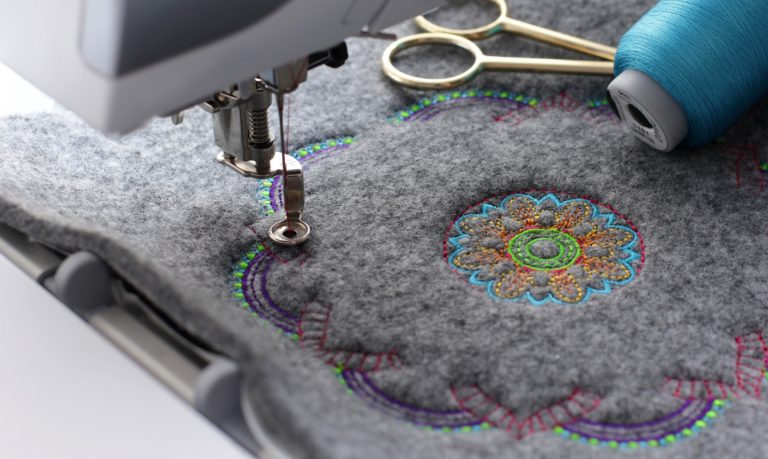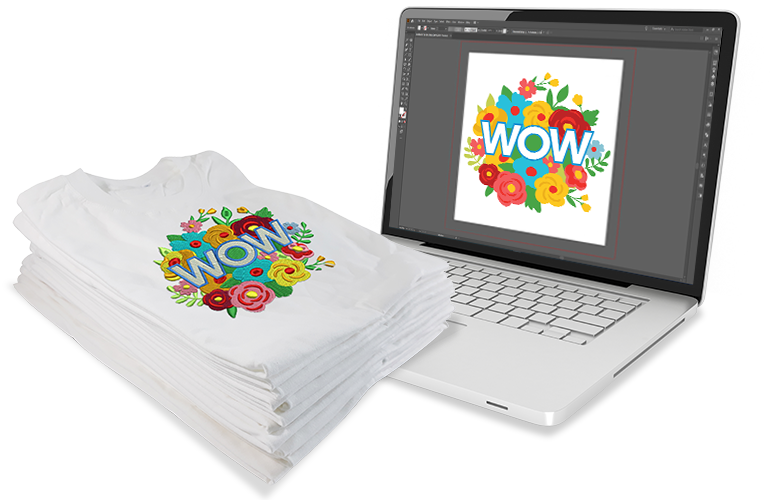Best Digitizing for Embroidery: Enhance Your Projects
Best Digitizing for Embroidery: Enhance Your Projects
Blog Article
Grasping the Needlework Digitizing Refine: Your Ultimate Overview
Needlework digitizing is a thorough craft that calls for accuracy and competence to equate complex layouts right into electronic styles for device embroidery. As artisans embark on this trip to understand the needlework digitizing procedure, a detailed understanding of the fundamentals sets the foundation for excellence.

Understanding Embroidery Digitizing Basics
Embroidery digitizing basics develop the foundation upon which elaborate styles are equated into machine-readable styles for accurate stitching. This initial step in the embroidery digitizing procedure is crucial for ensuring that the last stitched item is a devoted representation of the original layout. Understanding needlework digitizing essentials includes understanding essential concepts such as stitch kinds, sew direction, density, padding, and draw payment.
Sew kinds play an essential role in figuring out the aesthetic and textural end result of the embroidered style. By picking the suitable stitch type, whether it be satin, fill, or running stitch, digitizers can achieve the preferred effect and enhance the general high quality of the embroidery. In addition, stitch direction affects the flow and measurement of the style, while density figures out the spacing and protection of the stitches.
Additionally, padding stitching provides security to the design by safeguarding the material and preventing distortion throughout the embroidery procedure. Pull payment is one more vital consideration to combat the natural tendency of fabric to contract when sewn. Grasping these needlework digitizing basics is essential for developing professional-quality embroidered items.
Selecting the Right Digitizing Software Program
Selecting the suitable digitizing software application is a crucial decision that dramatically influences the efficiency and high quality of the embroidery digitizing procedure. Digitizing for Embroidery. When picking the appropriate digitizing software, it is necessary to take into consideration factors such as the complexity of designs you plan to create, the user-friendliness of the software application, the level of client assistance supplied, and the compatibility with your needlework equipment
There are numerous digitizing software program options available in the marketplace, ranging from basic programs for beginners to advanced software for professional digitizers. Some preferred selections consist of Wilcom EmbroideryStudio, Hatch Needlework Software Application, and PulseID. These software application bundles provide a broad variety of devices and attributes to aid you develop complex styles effortlessly.
Before deciding, it is advisable to discover the various software application options through free tests or demos to identify which one finest matches your needs. Additionally, reviewing testimonials and seeking recommendations from seasoned digitizers can supply important insights right into the staminas and weak points of each software application package (Digitizing for Embroidery). By meticulously reviewing your demands and comparing the attributes of different digitizing software program, you can make an educated choice that improves your embroidery digitizing process
Digitizing Tools and Strategies

Optimizing Style Settings for Embroidery
Grasping the complexities of design settings is basic in attaining optimum cause the embroidery digitizing process, structure upon the foundation laid by understanding digitizing devices and strategies. When enhancing style settings for embroidery, it is essential to take into consideration variables such as stitch kind, density, underlay, draw settlement, and registration. Stitch kind selection affects the total feel and look of the design, with alternatives like satin, fill, and running stitches offering various structures and effects. Thickness refers to the Home Page spacing and thickness of stitches, influencing the style's coverage and durability. Appropriate underlay sewing offers stability and stops material distortion, especially for intricate designs or on elastic materials. Draw payment adjusts for material stretch during sewing, guaranteeing exact style replication. Enrollment settings straighten different components of the design properly, maintaining total design honesty. By fine-tuning these style settings, embroiderers can improve the top quality and precision of their stitched developments.

Troubleshooting Common Digitizing Issues
When experiencing usual digitizing problems throughout the embroidery process, it is necessary to understand the source and implement efficient remedies quickly. One typical trouble is stitch density issues, where stitches might be also dense, causing the material to tighten, or also sparse, resulting in voids in the layout. Adjusting the stitch density settings in the digitizing software program can help fix this concern.
An additional frequent difficulty is string breaks throughout the needlework procedure. This can take place due to various reasons such as inaccurate stress setups, plain needles, or making use of low-grade thread. Ensuring proper maintenance of the embroidery maker, consisting of routine needle modifications and stress adjustments, can decrease the incident of thread breaks.
Furthermore, style enrollment mistakes can cause misaligned aspects within the embroidery layout. Inspecting the design placement in the digitizing software application and making necessary modifications prior to sewing can help in avoiding this problem. By addressing these common digitizing issues quickly and successfully, you can make certain a smoother needlework procedure and top quality ended up items.
Verdict
Finally, mastering the needlework digitizing procedure requires a solid understanding of the essentials, the appropriate choice of software program, and understanding of devices and techniques. Maximizing style settings and repairing typical digitizing problems are essential action in making certain top notch embroidery results. By adhering to these steps diligently, one can attain accuracy and effectiveness in the digitizing process.
Report this page